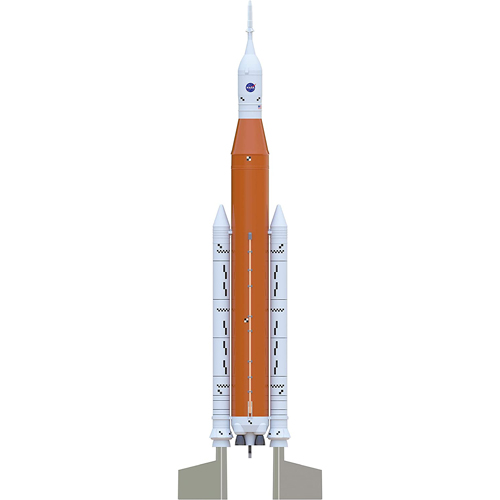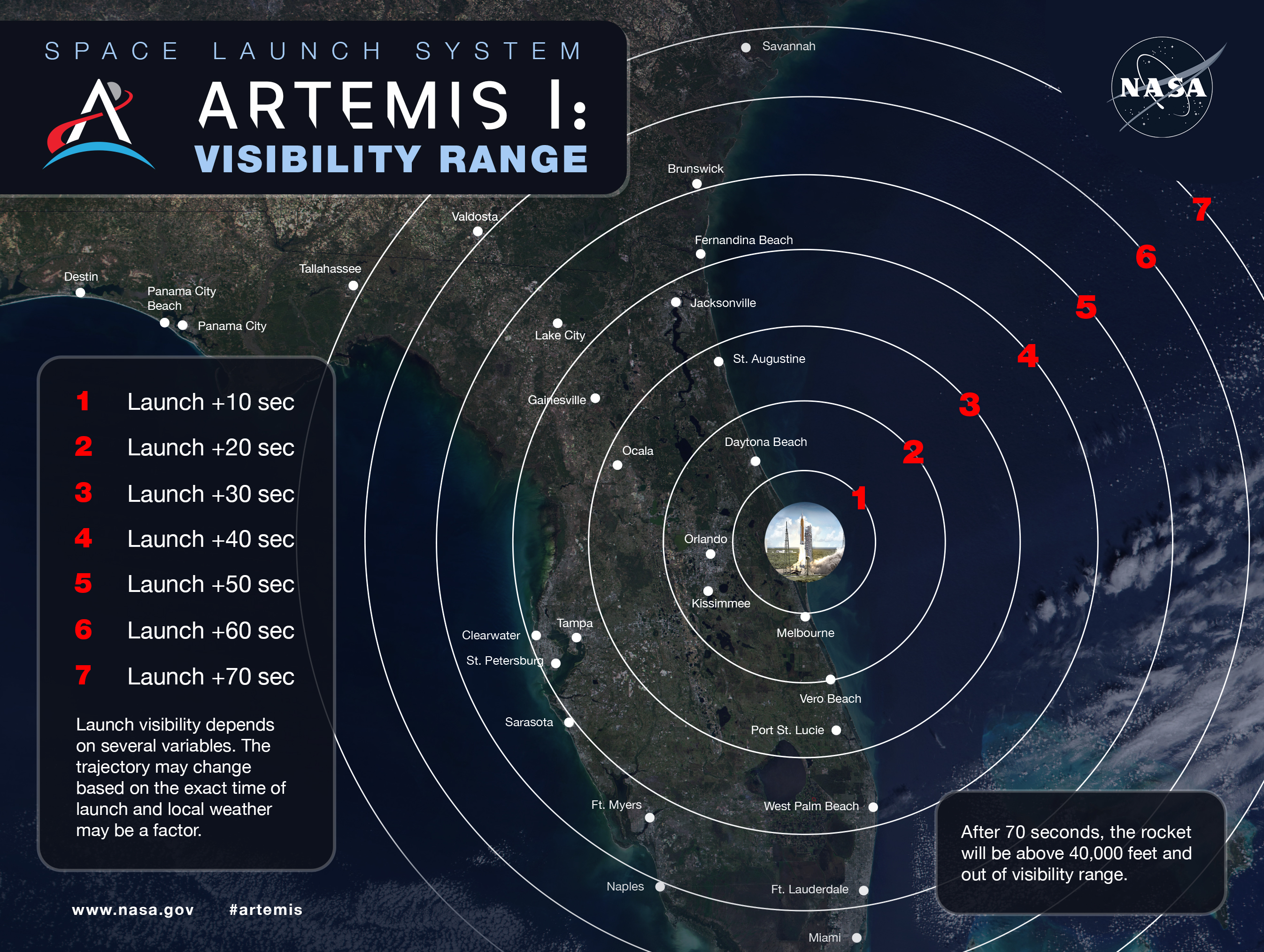NASA's nighttime Artemis 1 moon rocket launch will light up Florida's coast (visibility map)
Even if you aren't at the launch, you might be able to catch a glimpse of the rocket as it heads to space.
Update for 2 am ET: NASA successfully launched the Artemis 1 moon mission on the first Space Launch System rocket at 1:47 am EST (0647 GMT) in a stunning success. Read our full Artemis 1 launch story.
CAPE CANAVERAL, Fla. — NASA's planned launch of the Artemis 1 moon mission will light up the skies tonight, if all goes according to plan.
The massive 322-foot (98 meters) Space Launch System (SLS) rocket carrying the Orion spacecraft will lift off during a two-hour window that opens at 1:04 a.m. EST (0604 GMT), if the current plan holds. The launch will illuminate the entirety of the Kennedy Space Center here in Florida but will also be visible for hundreds of miles around, according to a map released by NASA on Monday (Nov. 14).
The map shows that Artemis 1 will be visible streaking through the the sky from as far away as Savannah, Georgia, some 300 miles (482 kilometers) to the north. To the south, observers all the way down to Miami should be able to see the rocket, provided their skies are clear.
Related: Watch NASA's Artemis 1 moon rocket launch on Nov. 16 online for free
Read more: NASA's Artemis 1 moon mission: Live updates

You can launch a Space Launch System of your own with this Estes NASA SLS model rocket for a 1:200 scale version of NASA's moon megarocket. Read more about it.
As seen on the visibility map released by NASA, the launch of Artemis 1 will be visible throughout Florida and into parts of surrounding states. The agency says the fiery plume of the SLS moon rocket will be visible for up to 70 seconds as it leaves Earth's atmosphere and powers Orion toward the moon.
"The rocket and spacecraft will no longer be visible to the naked eye after reaching an altitude of 42,000 feet" (12,800 meters), according to NASA's statement.
Get the Space.com Newsletter
Breaking space news, the latest updates on rocket launches, skywatching events and more!

However, the visibility depends on several factors including weather conditions and the time the rocket launches. Currently, there is an 80% chance of favorable weather conditions for launch, according to NASA.
When Artemis 1 does launch, it will send the Orion spacecraft on a 25-day journey to the moon and back. Along the way, the SLS vehicle will deploy 10 small satellites called cubesats, which will perform a variety of scientific experiments, some of which will pave the way for later Artemis missions.
Follow Brett on Twitter at @bretttingley. Follow us on Twitter @Spacedotcom or on Facebook.
Join our Space Forums to keep talking space on the latest missions, night sky and more! And if you have a news tip, correction or comment, let us know at: community@space.com.

Brett is curious about emerging aerospace technologies, alternative launch concepts, military space developments and uncrewed aircraft systems. Brett's work has appeared on Scientific American, The War Zone, Popular Science, the History Channel, Science Discovery and more. Brett has English degrees from Clemson University and the University of North Carolina at Charlotte. In his free time, Brett enjoys skywatching throughout the dark skies of the Appalachian mountains.









